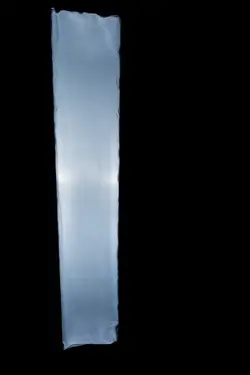Guille77
TPF Noob!
- Joined
- Aug 11, 2017
- Messages
- 6
- Reaction score
- 0
- Location
- Germany
- Can others edit my Photos
- Photos OK to edit
This is my very first post in the forum, so as a very short presentation I'll say I'm a hobby photographer from Spain living in Germany, who learnt taking pictures with a Praktika reflex film camera about 25 years ago and retook the hobby around 5 years ago already in the digital era. I (re-)started with a Nikon d5200 and jumped to the d750 1,5 years ago.
I've been trying to focus a bit more on portrait photography during the last 1-2 years. I've purchased some hardware for that, a couple of studio and system flashes, and some light modifiers - and that's where my question comes in.
I've bought during the last months a few of very cheap softboxes from Jinbei, which happened to come with diffusers (I refer to the fabric you attach to the front of the softbox with velcro, just in case) of different tonality. Some are neutral white, while some others have a noticeably warmer, yellow-ish tone. I'm not talking about barely noticeable differences between different manufactures, I mean two clearly distinguishable colors from the same manufacturer. They could be perfectly sold separately, as a customizing option. But it just seems to be a matter of luck which one you get. I try to upload a pic...

In order to avoid the pain of mixing light sources with different light temperatures, I'll return or sale some of them and only keep light modifiers with the same characteristics. But I'm not sure which ones I should keep. Some advice on the following questions would help me a lot:
- Is it also normal for other manufacturers to have diffusers which are clearly warmer than neutral white? What's more common?
- If that's the case, do you have any preferences? I could imagine the warmer sofboxes to work less artificial in some situations without the need of using gels, but I'd intuitively favour to have absolutely neutral sofboxes and modify them if needed.
- What would you do in my situation?
Thanks a lot in advance!
I've been trying to focus a bit more on portrait photography during the last 1-2 years. I've purchased some hardware for that, a couple of studio and system flashes, and some light modifiers - and that's where my question comes in.
I've bought during the last months a few of very cheap softboxes from Jinbei, which happened to come with diffusers (I refer to the fabric you attach to the front of the softbox with velcro, just in case) of different tonality. Some are neutral white, while some others have a noticeably warmer, yellow-ish tone. I'm not talking about barely noticeable differences between different manufactures, I mean two clearly distinguishable colors from the same manufacturer. They could be perfectly sold separately, as a customizing option. But it just seems to be a matter of luck which one you get. I try to upload a pic...

In order to avoid the pain of mixing light sources with different light temperatures, I'll return or sale some of them and only keep light modifiers with the same characteristics. But I'm not sure which ones I should keep. Some advice on the following questions would help me a lot:
- Is it also normal for other manufacturers to have diffusers which are clearly warmer than neutral white? What's more common?
- If that's the case, do you have any preferences? I could imagine the warmer sofboxes to work less artificial in some situations without the need of using gels, but I'd intuitively favour to have absolutely neutral sofboxes and modify them if needed.
- What would you do in my situation?
Thanks a lot in advance!










![[No title]](/data/xfmg/thumbnail/41/41761-8ca3fbaa811d0935e3ce369aaf34fdd8.jpg?1734176067)





